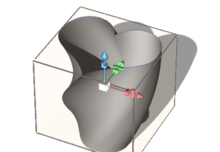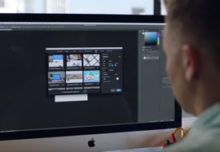
I am always looking for new ways to exploit my creativity through different technologies. From video, interactive, and mobile over the years. But 3D printing is on an entirely new level. (And the fact that I can do it in Photoshop CC is a huge bonus. Watch this video to learn how). It can almost give you a god complex of sorts as you’re able to create physical objects that have never existed before–making you an inventor, a sculptor, and an artist. If you’re like me, the ideas have already started flooding in for you too, but before you jump in let’s first step back and get a general understanding of how it all works.
Additive Manufacturing
3D printing is considered additive manufacturing. In this process, layers of material (plastic, wood , metal, sand, sugar, or even chocolate) are laid down in a pattern, one layer at a time, until the 3D object is created. It is an amazingly simple process. There are technically three major types of 3D printing: Fused Deposition Modeling, Stereolithography, and Laser Sintering. Each method has its advantages and disadvantages.
Fused Deposition Modeling (FDM)
Fused Deposition Modeling is the most common type of additive manufacturing. It’s easy, affordable, and many different materials can be used. The process involves feeding a spool of filament into an extruder where it is melted down (like a hot glue gun) and “drawn”, one layer at a time, to create the 3D shape.
|
Cost: $1,000 – $5,000 |
Pros:
Cons:
|
Material Used:
|
Stereolithography (SLA)
Stereolithography is a fascinating process in which a beam of UV light draws a pattern over a photosensitive pool of liquid resin. When the light hits the liquid it hardens. Once that layer is complete the base then moves to make room for the next layer, until the 3D object is made. This type can be really good for designers looking for extra detail, with the potential for mass production by casting their art in bronze or other metal.
|
SLA Printer (Formlabs video) Cost: $3,000 – $7,000 |
Pros:
Cons:
|
Material Used: |
Laser Sintering (SLS)
Selective Laser Sintering (SLS) works much like Stereolithography, but a powder is used instead of a liquid. When the laser hits the powder, the powder hardens. The powder surrounding the object being printed then acts as a support so there are no additional supports or scaffolding to break off as with the other processes. The powder is then removed leaving just the solid object, which can be plastic, metal, ceramic, or even full color sandstone. The metal and full-color sandstone options excite me the most. Although there’s not a consumer printer option available, you can send your objects to Shapeways.com for printing.
|
SLS Printer (YouTube video) Cost: $50,000+ (prices could drop) |
Pros:
Cons:
|
Material Used:
|

3D Printed Case from Shapeways.com
Which is Best?
So which 3D printer option is best? Well, I’d have to say the laser sintering printers. But you don’t have to worry about spending $50k because from within Photoshop CC you can send your models directly to Shapeways.com who will print them and send directly to your house. Curious on cost? A fancy iPhone case like this one cost me about $25.
Interested in buying your own? Well right now the FDM printers are the most widely available and their quality is getting really good. I personally like the Makerbot Replicator, 5th generation. Makerbot was one of the first companies to make 3D printers commercially and they are arguably the industry standard, with profiles built into Photoshop CC. I also like the Ultimaker 2 because it just feels more designer/Mac friendly and it’s open source. But what I REALLY want is the Formlabs Form 1 Stereolithography printer. It provides lots of detail, and you don’t see any of the layering lines. Plus the objects just look cool coming out of the liquid resin.








